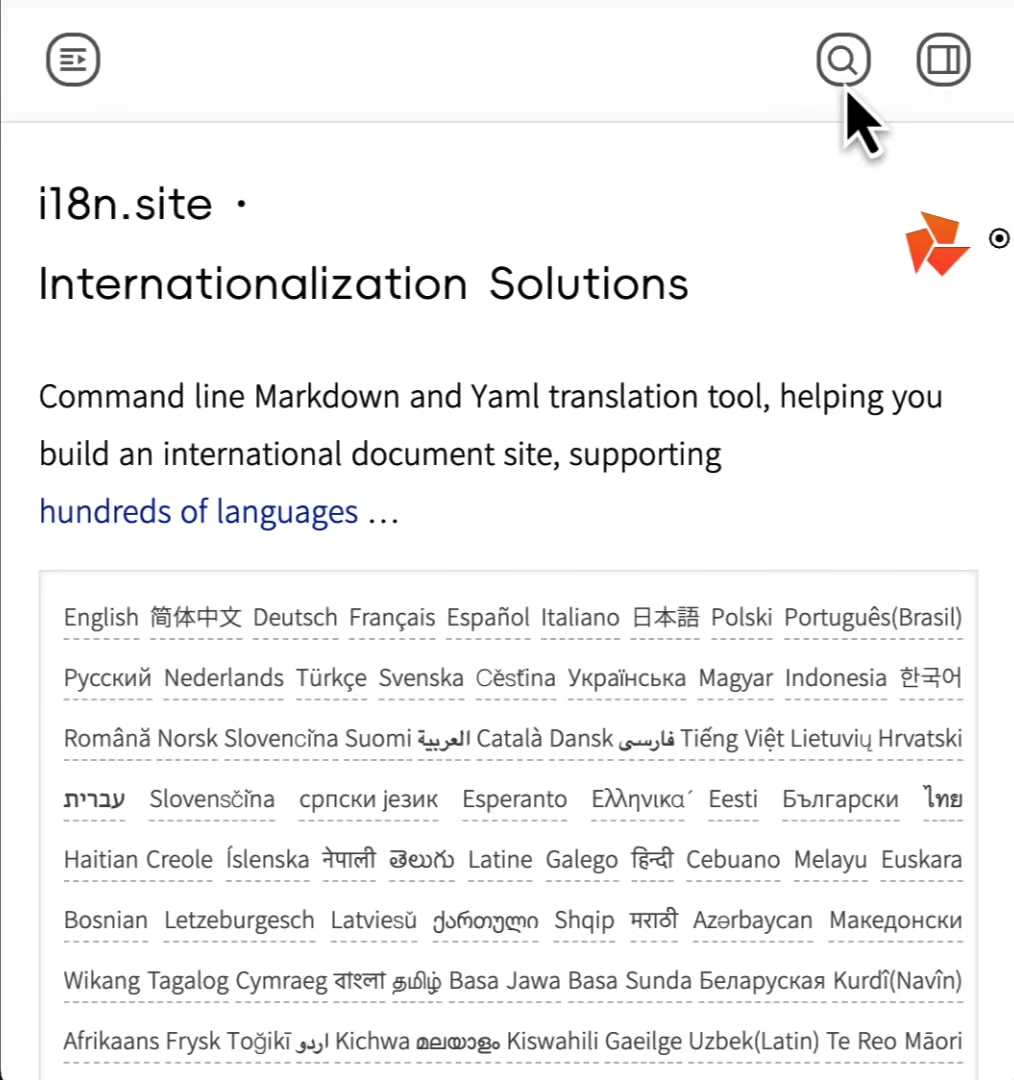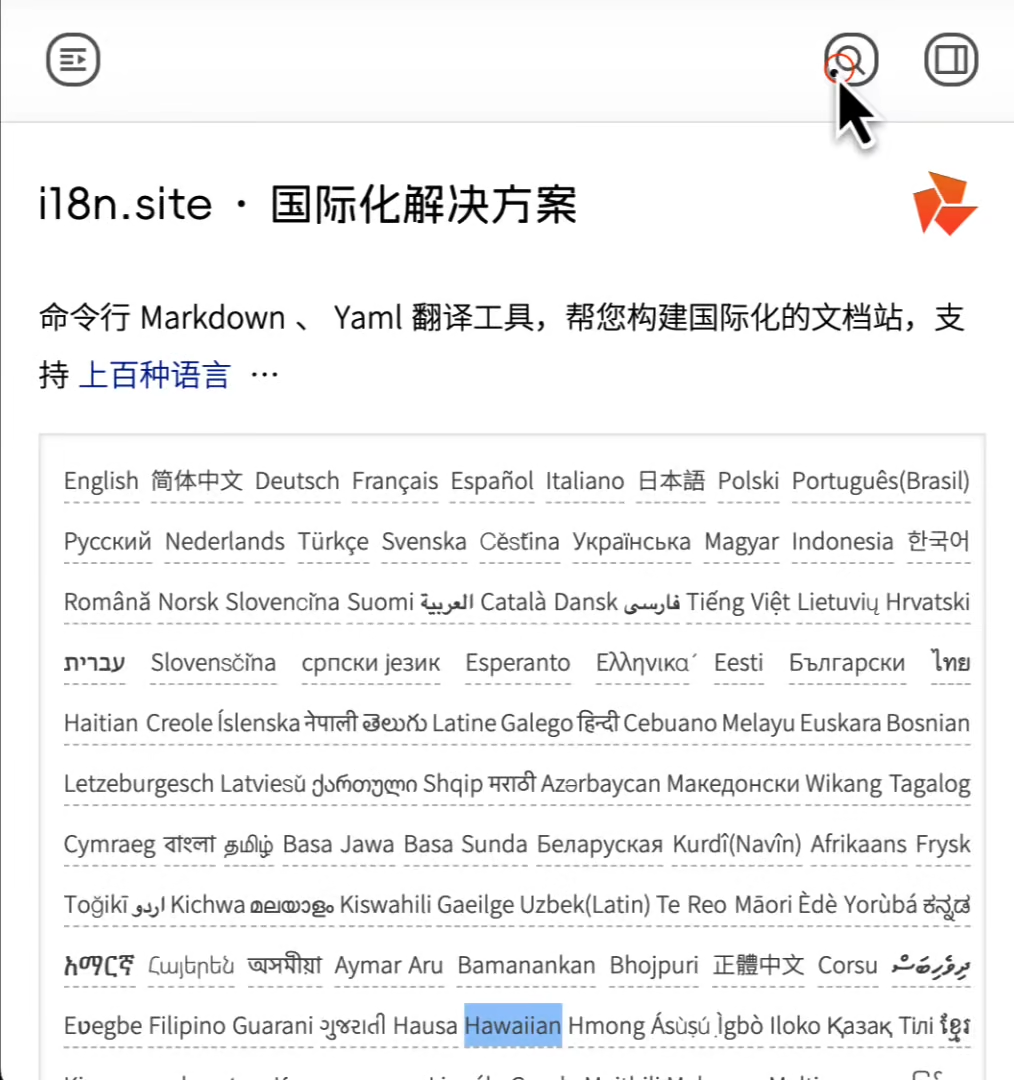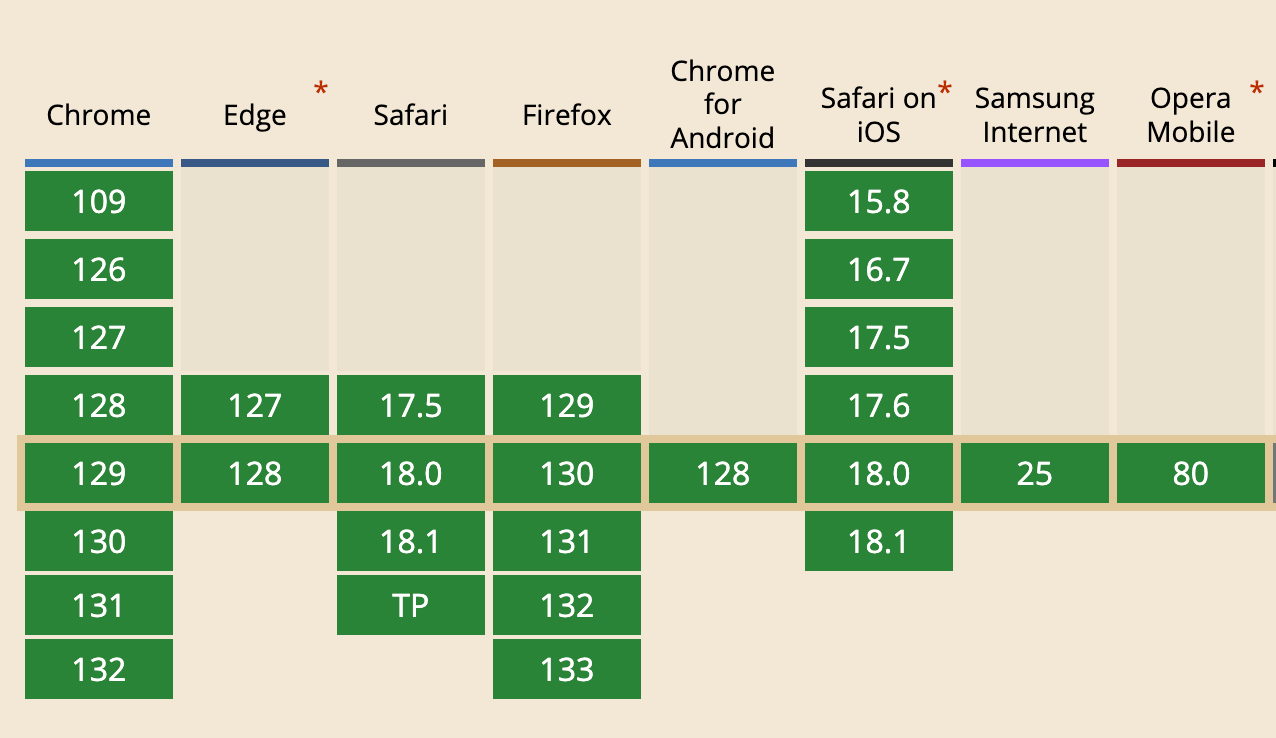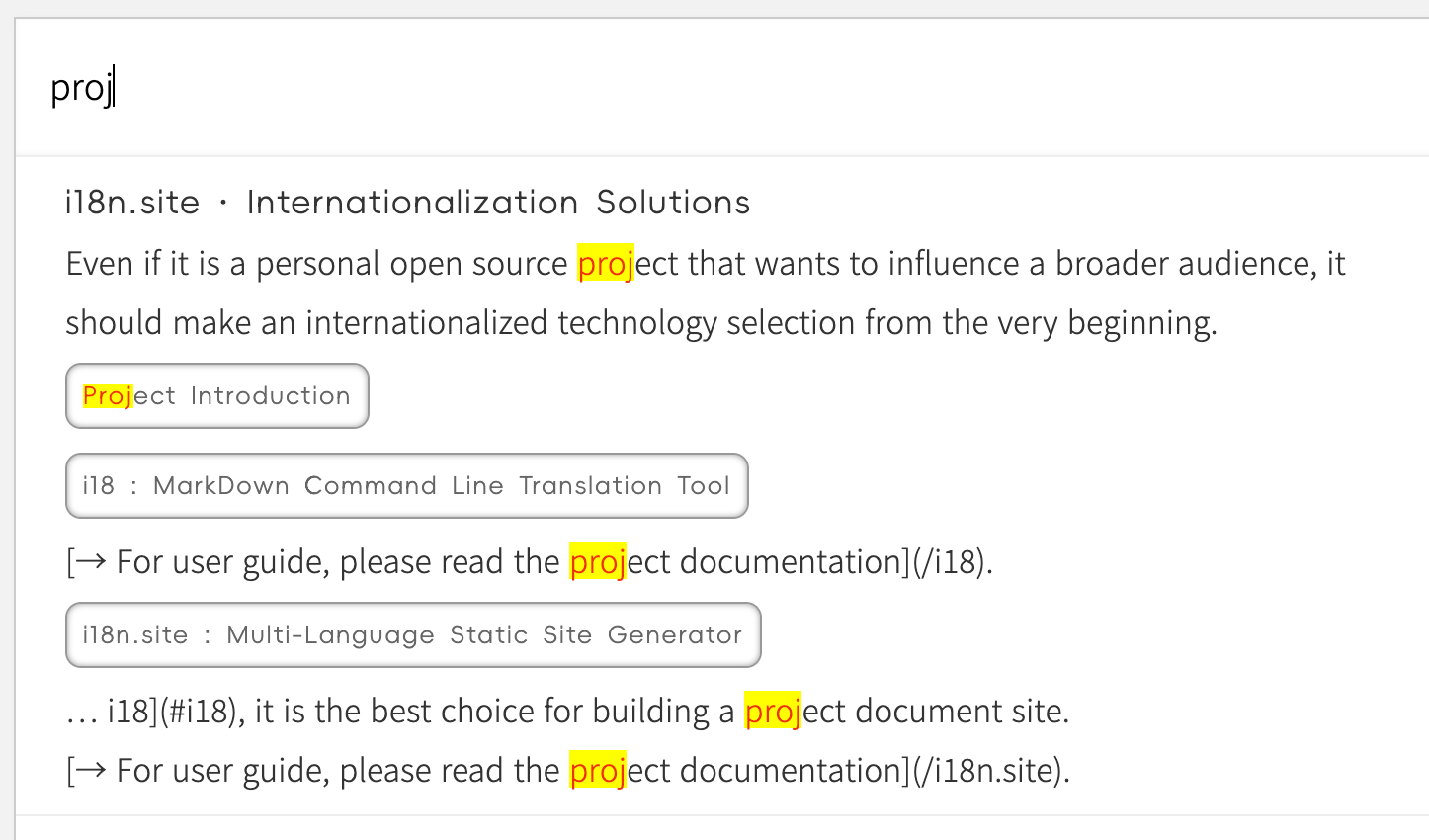brief: |
i18n.site now supports serverless full-text search.
This article introduces the implementation of pure front-end full-text search technology, including the inverted index built using IndexedDB, prefix search, word segmentation optimization, and multi-language support.
Compared with existing solutions, i18n.site's pure front-end full-text search is compact and fast, making it suitable for small and medium-sized websites such as documentation and blogs, and it is available offline.
Pure Front-End Inverted Full-Text Search
Introduction
After several weeks of development, i18n.site (a purely static markdown multilingual translation and website building tool) now supports pure front-end full-text search.


This article will share the technical implementation of i18n.site's pure front-end full-text search. Visit i18n.site to experience the search effect.
Code open source: Search kernel / Interactive interface
Overview of Serverless Full-Text Search Solutions
For small and medium-sized purely static websites such as documents/personal blogs, building a self-built full-text search backend is too heavy, and service-free full-text search is the more common choice.
Serverless full-text search solutions fall into two main categories:
The first category includes third-party search service providers like algolia.com, which offer front-end components for full-text search.
Such services require payment based on search volume and are often unavailable to users in mainland China due to issues such as website compliance.
They cannot be used offline or on intranets, which limits their applicability. This article will not delve into these solutions.
The second category is pure front-end full-text search.
Common pure front-end full-text search solutions include lunrjs and ElasticLunr.js (a secondary development based on lunrjs).
lunrjs has two methods for building indexes, each with its own issues.
Pre-built index files
Because the index contains all the words from the documents, it is large in size.
Whenever a document is added or modified, a new index file must be loaded.
This increases the user's waiting time and consumes a lot of bandwidth.
Loading documents and building indexes on the fly
Building an index is a computationally intensive task. Rebuilding the index every time a user accesses it can cause noticeable lag and poor user experience.
In addition to lunrjs, there are other full-text search solutions, such as:
fusejs, which calculates the similarity between strings to search.
The performance of this solution is extremely poor and is not suitable for full-text search (see Fuse.js Long query takes more than 10 seconds, how to optimize it?).
TinySearch, which uses a Bloom filter to search. It cannot be used for prefix search (e.g., entering goo to search for good or google) and cannot achieve an auto-complete effect.
Due to the shortcomings of existing solutions, i18n.site has developed a new pure front-end full-text search solution with the following features:
- Supports multi-language search and is small in size. The search kernel, after being packaged with
gzip, is only 6.9KB (for comparison, lunrjs is 25KB) - Builds an inverted index using
IndexedDB, which takes up less memory and is fast - When documents are added/modified, only the added or modified documents are re-indexed, reducing the amount of calculations
- Supports prefix search and can display search results in real-time as the user types
- Available offline
Below, we will detail the technical implementation of i18n.site.
Multilingual Word Segmentation
Word segmentation uses the browser's native Intl.Segmenter, which is supported by all major browsers.

The word segmentation coffeescript code is as follows:
SEG = new Intl.Segmenter 0, granularity: "word"
seg = (txt) =>
r = []
for {segment} from SEG.segment(txt)
for i from segment.split('.')
i = i.trim()
if i and !'| `'.includes(i) and !/\p{P}/u.test(i)
r.push i
r
export default seg
export segqy = (q) =>
seg q.toLocaleLowerCase()
in:
Index Building
Five object storage tables were created in IndexedDB:
word: id - worddoc: id - document URL - document version numberdocWord: document id - array of word idsprefix: prefix - array of word idsrindex: word id - document id : array of line numbers
An array of document url and version number ver is passed in, and the doc table is checked to see if the document exists. If it does not, an inverted index is created. At the same time, the inverted index for documents that were not passed in is removed.
This approach enables incremental indexing, reducing the amount of computation.
In terms of front-end interaction, a loading progress bar can be displayed to avoid lag during the first load. See "Progress Bar with Animation, Based on a Single progress + Pure CSS Implementation" English / Chinese.
IndexedDB High-Concurrency Writing
The project is based on the asynchronous encapsulation of IndexedDB, idb.
IndexedDB reads and writes are asynchronous. When creating an index, documents are loaded concurrently to build the index.
To avoid data loss caused by concurrent writes, a ing cache can be added between reads and writes to intercept competing writes. Refer to the following coffeescript code.
pusher = =>
ing = new Map()
(table, id, val)=>
id_set = ing.get(id)
if id_set
id_set.add val
return
id_set = new Set([val])
ing.set id, id_set
pre = await table.get(id)
li = pre?.li or []
loop
to_add = [...id_set]
li.push(...to_add)
await table.put({id,li})
for i from to_add
id_set.delete i
if not id_set.size
ing.delete id
break
return
rindexPush = pusher()
prefixPush = pusher()
Precision and Recall
The search first segments the keywords entered by the user.
Assume that there are N words after segmentation. When returning results, the search first returns results containing all keywords, followed by results containing N-1, N-2, ..., 1 keyword.
The initial search results ensure query accuracy, while subsequent results (loaded by clicking the "load more" button) ensure recall.

Load on Demand
To improve response speed, the search uses a yield generator to implement on-demand loading, returning results in batches of limit.
Note that each time a search is performed after a yield, a new IndexedDB query transaction must be opened.
Prefix Real-Time Search
To display search results while the user is typing, for example, when wor is entered, words prefixed with wor such as words and work are displayed.

The search kernel uses the prefix table to find all words prefixed with the last word after segmentation and searches them in sequence.
The front-end interaction also uses a debounce function debounce (implemented as follows) to reduce the frequency of user input triggering searches and to reduce computational load.
export default (wait, func) => {
var timeout;
return function(...args) {
clearTimeout(timeout);
timeout = setTimeout(func.bind(this, ...args), wait);
};
}
Available Offline
The index table does not store the original text, only the words, which reduces storage requirements.
Highlighting search results requires reloading the original text, and using a service worker can avoid repeated network requests.
Since the service worker caches all articles, once a user performs a search, the entire website, including the search functionality, is available offline.
Display Optimization for MarkDown Documents
i18n.site's pure front-end search solution is optimized for MarkDown documents.
When displaying search results, the chapter name is shown, and clicking on it navigates to the corresponding chapter.

Summary
The pure front-end inverted full-text search, which does not require a server, is very suitable for small and medium-sized websites such as documentation and personal blogs.
i18n.site's open-source, self-developed pure front-end search is compact and fast, addressing the shortcomings of current pure front-end full-text search solutions and providing a better user experience.